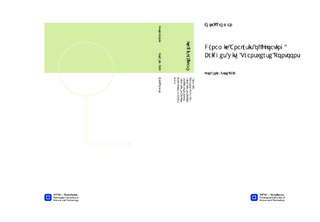Dynamic Analysis of Floating Bridges with Transverse Pontoons
Master thesis
Permanent lenke
http://hdl.handle.net/11250/238893Utgivelsesdato
2014Metadata
Vis full innførselSamlinger
- Institutt for marin teknikk [3437]
Sammendrag
The main objective of this thesis is to analyse the dynamic response of floatingbridges with transverse pontoons, when subjected to harmonic regular waveloads. As a result, a simplified beam model of the Bergsøysundet floating bridge isestablished in the FEM software Abaqus. Additional synthetic floating bridgestructures are subsequently built and analysed in a similar manner.The pontoon model already developed in Genie by Abdillah Suyuthi is analysed inHydroD to obtain the pontoon s structural model and hydrodynamic parameters.In addition to these parameters, by implementing his calculated data of mass andsectional properties of the bridge truss-work components, the simplified beammodel of the bridge is developed in Abaqus. Taking the Bergsøysundet floatingbridge model as the basis, synthetic bridge models are similarly assembled andstudied. The effect of sideway mooring is also considered for some of the models.Eigenfrequency analysis is then carried out in Abaqus in order to determine thefrequency of the fundamental mode of a model. The eigenfrequency and addedmass are updated by iteration until they are concurrent. Static and dynamicanalysis are then carried out for the model. The regular wave load correspondingto the updated frequency of the mode is acquired from the hydrodynamic analysisin HydroD and applied in Abaqus.Efficient techniques are presented to calculate the phase difference at eachpontoon. This arises due to the combined effect of changing wave direction andshapes of the models.A simplified method is employed to gauge the critical angle of wave heading. Theeffect of wave spreading is also assessed in a streamlined manner based ondiscussion with the supervisor.Limitations with regard to the non application of full matrices of the pontoon sstructural model and hydrodynamic parameters are highlighted. Negativelydamped sway motions are controlled by the application of external lateraldampers. Mixed results are obtained at the estimated critical angles. Better resultis obtained by iteration of the responses for growing angles of wave heading. Thewave spreading response result is satisfying
